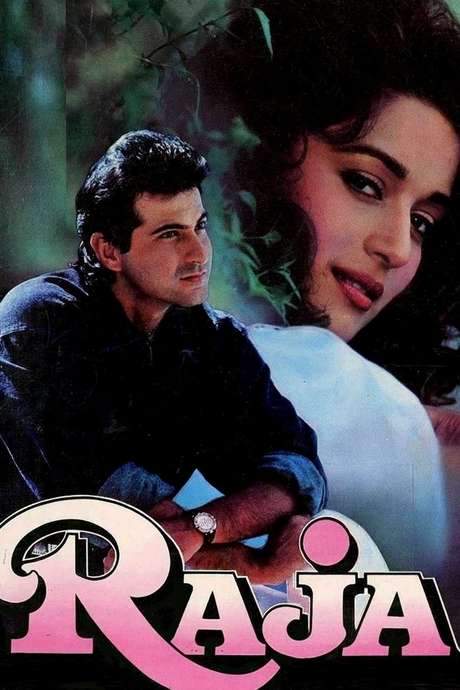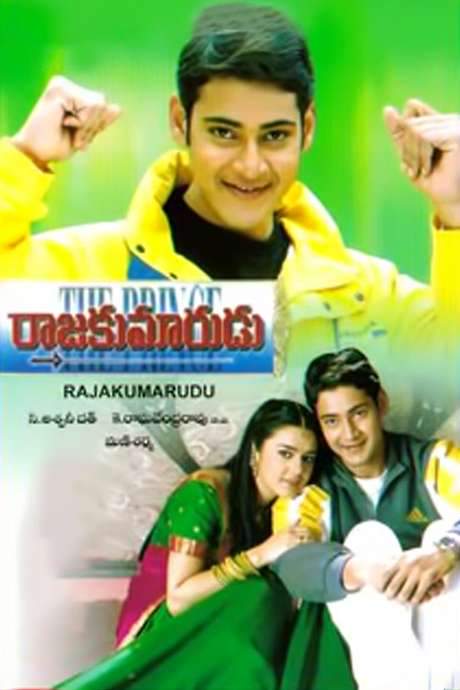Warning: spoilers below!
Haven’t seen Bobbili Raja yet? This summary contains major spoilers. Bookmark the page, watch the movie, and come back for the full breakdown. If you're ready, scroll on and relive the story!
Bobbili Raja (1990) – Full Plot Summary & Ending Explained
Read the complete plot breakdown of Bobbili Raja (1990), including all key story events, major twists, and the ending explained in detail. Discover what really happened—and what it all means.
In the village of Bobbili, a tense election season unfurls, laying bare the fierce rivalry between Sundarayya and Rajeswari Devi. The two camps pull every lever in a bid to win, using strategy, influence, and pressure to sway the voters. Among the people reshaped by this contest are Ahobala Rao, Rajeswari’s elder brother, and Suryam, the younger brother who secretly supports Sundarayya. Suryam also loves Rajyalakshmi, the daughter of Sundarayya’s rival, and when Rajyalakshmi becomes pregnant with Suryam’s child, the town begins to sour on them both. The scandal, fueled by fear and prejudice, becomes a political tool: Ahobala Rao uses the situation to bolster his party’s standing while tarnishing the reputation of Sundarayya and Rajyalakshmi. In the heat of the campaign, Suryam resolves to tell the truth, but Ahobala Rao intervenes, hoping to shape the narrative in his favor. In a fateful clash, Suryam dies, and Ahobala Rao orchestrates a cruel lie, accusing Sundarayya and Rajyalakshmi of murder. The consequence is swift and brutal: the two lovers are arrested, but they manage a daring escape and vanish into the forest, where they must confront the consequences of the past.
Twenty-five years pass, and the landscape has shifted as dramatically as the people. Rajyalakshmi’s son, Raja, has grown up amid the forest’s trials, raised by his mother and his grandfather in a world far from the village’s politics. Meanwhile, Rani, the minister of forests and the daughter of Rajeswari, lives in relative luxury and power, seemingly distant from the old wounds that divided the families. The two worlds collide when Rani visits the forest with friends, and Raja—the forest’s skilled guide—leads them through treacherous paths and playful quarrels that hint at a growing bond. The group’s lighthearted banter gives way to danger as they become lost in the wild, where the air is thick with possibility and peril. Amid the trees and the quiet, the two outsiders discover a surprising connection that blossoms into romance, challenging the rigid lines that geography and history have drawn around them.
Back in the forest, the pursuit of Rani’s whereabouts accelerates. Rajeswari travels into the woods to locate her daughter, and in a cruel turn of fate, she discovers that Raja is Sundarayya’s grandson. The revelation sets off a new storm; Rajeswari captures Sundarayya and Rajyalakshmi and pressures them for answers. The elder woman’s challenge to the descendant of Sundarayya is stark: she insists that Rani must not be married to Raja, and she vows to stop such a union. Yet Rajyalakshmi and Rajeswari engage in a tense confrontation that pushes both sides toward a precarious compromise. Rajeswari eventually traces Rani and brings her home, but the moment she learns that Raja is her daughter’s cousin and a potential ally, she faces a moral dilemma: she must decide whether to honor old feuds or to allow love to rewrite a family’s future. With the help of her husband, Appa Rao, Rani dares to slip away and return to the forest, hoping to protect the bond she has formed with Raja, while Rajeswari trails in hot pursuit.
In the village, the stakes rise again when Raja returns to Bobbili and declares his intent to test the limits of the old orders. He threatens the ministry, using the prospect of R立ani’s (Rani’s) life and the forest’s future to force a reckoning. The authorities respond in a heavy-handed fashion, and Rajyalakshmi finds herself ensnared in an old murder case that has never truly been laid to rest. Raja fights for his own life and for the truth, but the system is quick to maneuver against him. He is arrested after a clash with the police, yet he refuses to stay silent. In a courtroom confrontation that feels like a reckoning, Raja lays out the truth, and the attention it draws from the government forces Rajyalakshmi to face consequences she cannot escape. The political machine, rattled by new revelations, begins to turn away from her, and her position as minister of forests begins to crumble.
Meanwhile, Ahobala Rao continues to manipulate the situation, attempting to force the marriage of Rani to his own son Amurtha Rao. The ploy reveals a deeper cruelty in his ambitions, and his actions become a turning point that awakens Rajeswari to the cost of her past choices. The realization hits hard: she must face the truth about the people she once trusted and the legacy of the enmities she helped sustain. In a moment of clarity, she acknowledges her mistakes and extends an apology to Raja and Rajyalakshmi, signaling a shift toward reconciliation rather than revenge. The film’s arc culminates in a quiet, hard-won unity: Raja and Divya Bharti as Rani, having endured years of distance and upheaval, choose to marry and forge a new future together. The wedding marks not only a personal union but also a redefining of loyalties—the end of old feuds and the promise of a more hopeful alliance between the forest’s protectors and the village’s people.
What unfolds is more than a romance set against political intrigue. It is a multi-generational chronicle of pride, betrayal, forgiveness, and the stubborn resilience of families who must learn to see beyond past mistakes to build a shared future. The film uses sweeping landscapes, sharp political maneuvering, and intimate human moments to explore how power can distort truth, while love and responsibility can rebuild what hate tries to destroy. Throughout, the characters’ journeys—from the village’s streets to the sheltering canopy of the forest—are drawn with care, letting the audience witness how compassion and courage can reshape a community’s fate.
Last Updated: October 09, 2025 at 15:05
Unlock the Full Story of Bobbili Raja
Don't stop at just watching — explore Bobbili Raja in full detail. From the complete plot summary and scene-by-scene timeline to character breakdowns, thematic analysis, and a deep dive into the ending — every page helps you truly understand what Bobbili Raja is all about. Plus, discover what's next after the movie.
Bobbili Raja Timeline
Track the full timeline of Bobbili Raja with every major event arranged chronologically. Perfect for decoding non-linear storytelling, flashbacks, or parallel narratives with a clear scene-by-scene breakdown.

Similar Movies to Bobbili Raja
Discover movies like Bobbili Raja that share similar genres, themes, and storytelling elements. Whether you’re drawn to the atmosphere, character arcs, or plot structure, these curated recommendations will help you explore more films you’ll love.
Explore More About Movie Bobbili Raja
Bobbili Raja (1990) Scene-by-Scene Movie Timeline
Bobbili Raja (1990) Movie Characters, Themes & Settings
Bobbili Raja (1990) Spoiler-Free Summary & Key Flow
Movies Like Bobbili Raja – Similar Titles You’ll Enjoy
Raja Ranguski (2018) Full Summary & Key Details
Raja Vaaru Rani Gaaru (2019) Film Overview & Timeline
Raja Bhaiya (2003) Story Summary & Characters
Raju Bhai (2007) Complete Plot Breakdown
Ranga (1982) Story Summary & Characters
Bobbili Puli (1982) Ending Explained & Film Insights
Rajathi Raja (1989) Ending Explained & Film Insights
Raja Chinna Roja (1989) Plot Summary & Ending Explained
Rana Naidu (1000) Movie Recap & Themes
Raja (1995) Ending Explained & Film Insights
Rajakumarudu (1999) Full Movie Breakdown
Bobby (1973) Movie Recap & Themes
Raja Babu (1994) Plot Summary & Ending Explained
Raja Hindustani (1996) Spoiler-Packed Plot Recap
Bobbili Simham (1994) Ending Explained & Film Insights


















